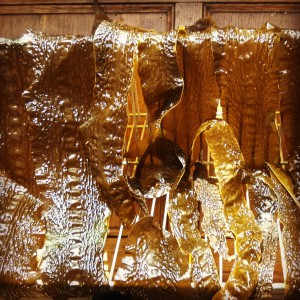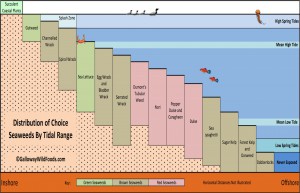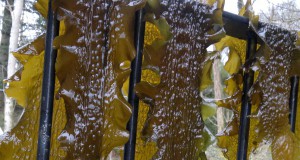Sugar kelp – Identification, Edibility, Distribution
Saccharina latissima
Related Pages:
Habitat: Starting from the mean low tide mark downwards, attached to rock, boulders and large stones, often in gullies.
Identification: Very distinctive elongated crenulated ribbons, reminiscent of a long, frilly feather boa. Up to 4m in length with a short, narrow cord and holdfast at the base.
Edible Uses: Sugar kelp is closely related to Saccharina japonica, the (farmed) seaweed basis of nearly all Japanese dashi, and can be used in similar ways – adding umami to soups, stews and stocks. However, dried dulse and laver exude more glutamates by weight than sugar kelp (read an in-depth study into this here). As they are better eating as vegetables too, I recommend using them in soups and stews, though there is no harm in adding sugar kelp to the pot in the same way as you might add bay leaves. It contains mannitol, a naturally occurring sugar that will add sweetness. Deep fried sugar kelp make excellent crisps, though I recommend a least partially drying it first to avoid dangerous fat-spitting! Younger, thinner fronds make great fat-free crisps – just fully dehydrate and lightly toast in the oven or a dry frying pan before serving.
Harvest: Spring to Autumn
Related pages:



1 Comment
i have some of this dried, and have been amazed at the wonderful umami fragrance, that I felt exceeded the quality, Japanese konbu that we have. I think our Japanese konbu is wild harvested off the coast of Hokkaido and not farmed, but I may be wrong. I have been confused, calling this species sugar kelp and oar weed, I mean it’s shaped like an oar! So great to be better informed, and so interesting to know that this is the kelp most closely related to Japanese konbu.